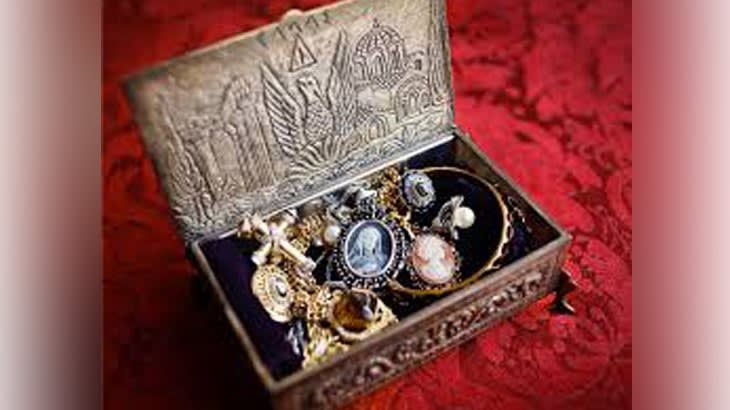Over decades, Indian jewellery and jewellery designing has been captivating the hearts of people across the globe. This is through its unique patterns, intricate embellishments and a wide variety of designs. Jewellery has been a major aspect of the Indian culture for centuries.
Over time, the change in the designs and patterns of the jewellery have been influenced by social, cultural & political factors. That is the reason modern-day Indian jewellery designs have a charming effect on the world.
The first known jewellery originated in Africa and was made of shell and Ostrich eggshells, which are nearly 75,000 years ago. Jewellery was made from bone, teeth and similar materials. Though evidence of jewellery existed before, it was not until 3,000-5,000 BC in Ancient Egypt that jewellery making was truly established. At that point of time Gold was used in metalworking.
Jewellery originated in India started 5000 years ago. During the 7000 – 5500 BC, when the hunters of Indus valley bought this to India with the discovery of diamonds. Craftsmen used shells and gemstones to craft rudimentary fabrications. Skilled Indus Valley artisans shaped and cut gemstones which were put together using gold.
The Indo-Greek oceanic trade was found in 130 BCE so the gold jewellery design demands increased. As Greeks were the most common buyers and paid for the spices with gold. As India was the first country in the world to mine diamonds, it was the only country to supply gemstones and diamonds for more than 2000 years. Some of the popular Indian diamonds include the Regent, Hope, Orloff and the Koh-i-Noor diamond.

Fine Jewellery during the Vedic Period

During the Vedic period, the theory such as Ratna Pariksha and the Ratna Rahasya elaborated the cutting, structuring of the gemstones. They were used for astrological purposes while the other theories like Daivajna Varahmihira’s Brihat-Samhita first categorised 22 ratna’s. The Indian craftsmen depicted the beauty of gemstone and diamond jewellery in Bhahrut, Gandhara, Mathura, Sanchi, Bodhgaya and Amaravati.
The influence of invaders is visible not only in the lifestyle of the people but also in jewellery found in Taxila. Greco Roman style has heavily influenced this.
The paintings at Ajanta show the representation of jewellery. The ancient Tamil poem Silappadikaram tells the story of the jewelled anklet, chronicling life during the Chola-Pandya rule including trade in gold, pearls and precious stones. South Indian Temple Jewellery was made of heavy gold, gemstones or precious stones like rubies and emeralds. These were different for different gods or goddesses or set in attractive designs such as gopuramor temple entrance towers.

Influence of Trade and Invaders

Indian trade with the European countries was made through the oceans and had only one route through land which passed through the lanes of the silk valley. After the discovery of the Cape of Good Hope, the invasion of vasco de gama improved the European trade with India in the 15th century. This then led to the dominance of the subcontinents of India. The entire 16th century saw the golden age of Indian jewellery as the mughal invaders bought in large amounts of gold and gemstone jewellery to India. Local designers at that time were skilled with Central Asian patterns such as floral and nature-inspired ornamentation.
The mughals made jewellery a concept for just the ruling families or aristocrats and no one else. The Jadau technique belongs to the Mughals, but the Indian artisans perfected the craft.
Also Read: HERE IS HOW TO START A CAREER IN JEWELLERY DESIGNING
Fine Jewellery Designing during the 20th Century
In the late 19th century, colonial rule expanded across India and fine jewellery in India was influenced by European designs. Maharajas of India used to commission the jeweller to stud beautiful gemstones into remarkable designs.
Traditional and Cultural Highlights of Indian Jewellery

Indian jewellery is beautiful and precious. The reasons that it is worn for are equally as interesting. Be it weddings, parties or for daily wear, we have a large variety of jewellery pieces in unique designs.
India always had a high reputation in the imperial world for the trade of gemstone jewellery. As it was the first ever country to mine diamonds and also became the first to trade them. The early mines were at the Godavari Riverbanks near Hyderabad. In some cases, these were given as royal gifts to other kings or officials.
According to Indian history, there are various stories about diamonds bringing blessings or curses. The story of the Hope diamond is a very popular one. This gorgeous diamond is said to be one of the eyes of mata Sita. A legend says that anyone who touches the Hope diamond is bound to a cursed and painful death.
Indian jewellery designing is inspired from across the continents and from different countries. The European influences were found to be more evident in colonial rule over India. Cartier used to design stone jewellery for the Indian Maharajas.
The history of Indian jewellery is deeper than the ocean. So, if you want to know everything, you can join a Jewellery Designing course and learn from experts because the stronger your knowledge the better your skills! So, why wait? Join Hamstech and start fulfilling your dreams of becoming a certified Jewellery Designer!

